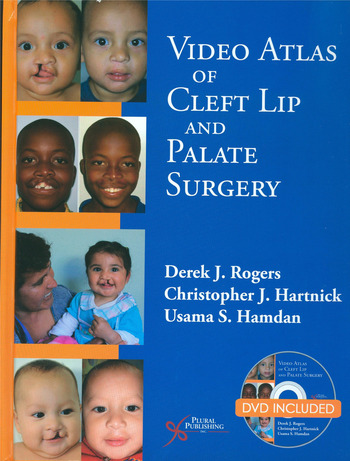I am reviewing a topic of which I know little, but I find this field fascinating and inspiring. There are few otolaryngologists in the UK who tackle such work, due, I guess, to historical inter-specialty conflict (we lost). For most of us, any involvement is limited to salvaging the ear disease resulting.
This is a multi-author, hardback book. It is not cheap, but the immediate impression is of a high quality publication. There are sharp colour illustrations, nicely printed line diagrams and, of course, the disk, which is invaluable (once you manage to get it out of the plastic folder – that takes some doing). Do not be deterred by the lack of sound (I cursed my IT skills at first, sure that I had somehow muted it). Most surgical videos are silent, accompanied by interspersed brief text describing the stages. However, I was then deafened as a chapter opened on secondary cleft lip rhinoplasty, with loud commentary! This proved to be my favourite section, amongst many excellent contributions. As you would expect, this must be the definitive guide to all aspects of the work involved in congenital defects of the lip and palate.
All such books will start with the basic sciences, but I would recommend chapter three as totally novel. The challenge of providing a surgical service to what we still call The Third World is superbly covered. If one is to run an International Surgical Outreach Initiative, there needs to be planning for power failures, fire, oxygen supply interruptions and lack of blood products. There is a great generic message here for any of us taking on surgical camps. The basic sciences continue with orthodontics and anthropometry (work it out: human and measurement), the science of facial symmetry, and aesthetics. If you ever wondered where the ‘stomion’ is, you will learn here.
The book obviously concentrates on the knife to skin surgery. It works from anteriorly, covering the ‘simple’ cleft lip and bilateral cleft, to posteriorly, addressing palatal defects. Rhinoplasty is well covered, and I was very impressed by Table 13-3, a series of questions to guide surgical decision-making. As a novice, I found this very incisive. Revision surgery is clearly a challenge, but it is gratifying to see how faces, usually in adults, are salvaged and transformed by expert work. Speech disorders, prosthetics and correction of velopharyngeal incompetence close the textbook.
For any unit engaged in such work, this must be an essential reference. For trainees, it could inspire an interest in work that is very rewarding and for which there is still a massive international need.



